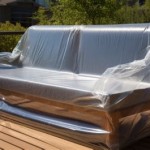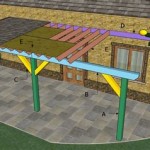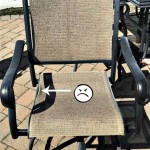How To Build A Pea Gravel Patio On Sloped Ground In Pennsylvania
Creating a pea gravel patio on sloped ground in Pennsylvania presents unique challenges and opportunities. The inherent slope necessitates careful planning and execution to ensure stability, proper drainage, and a visually appealing finished product. This article provides a comprehensive guide to building a durable and functional pea gravel patio on a sloped surface, specifically addressing considerations relevant to the Pennsylvania climate and geological conditions.
Pennsylvania's climate, characterized by freeze-thaw cycles, requires a robust foundation that can withstand seasonal changes. The soil composition, which can vary greatly across the state, will also influence the choice of materials and construction techniques. Furthermore, local regulations regarding drainage and erosion control must be adhered to throughout the project.
Planning and Preparation: Addressing the Slope
The initial phase involves meticulous planning and preparation. Accurately assessing the slope is paramount. This can be achieved using a level, measuring tape, and stakes. Determine the degree of incline and identify the highest and lowest points of the intended patio area. This information will inform the necessary excavation depth and the construction of retaining walls or terraced levels, if required.
Consider the functionality of the patio. How will it be used? How many people will it accommodate? What type of furniture will be placed on it? Answering these questions will dictate the size and shape of the patio. Mark the perimeter of the patio area using stakes and string. This visual representation will aid in visualizing the finished product and ensure accurate excavation. Next, it is important to check local zoning ordinances and homeowner association rules to ensure compliance with any restrictions on hardscaping projects.
Pennsylvania's climate necessitates careful consideration of drainage. Sloped ground naturally facilitates water runoff, but uncontrolled runoff can lead to erosion and damage to the patio and surrounding landscape. Integrate a drainage system, such as a French drain or a series of swales, to manage water flow effectively. The chosen drainage solution should be incorporated into the patio design during the planning stage.
Prior to excavation, contact Pennsylvania One Call System (811) to locate and mark underground utilities. This prevents accidental damage to buried lines during excavation, ensuring safety and avoiding costly repairs. Once utilities have been located and marked, excavation can commence.
Dig out the designated area to a depth that accounts for the base layers, the pea gravel surface, and any desired edging material. The depth will vary depending on the slope's severity and the chosen base materials, but a general guideline is to excavate at least 6-8 inches below the desired finished grade. On a sloped surface, the excavation depth will be greater at the higher end of the slope to maintain a level finished surface.
If the slope is significant, consider terracing the patio. Terracing involves creating multiple level surfaces connected by retaining walls or gentle slopes. This approach not only reduces the amount of excavation required but also adds visual interest and enhances the usability of the patio. Retaining walls can be constructed from various materials, including concrete blocks, natural stone, or treated lumber. Ensure that the retaining walls are properly engineered and constructed to withstand the pressure of the soil behind them.
Building The Base: Foundation for Longevity
The base is arguably the most crucial component of a pea gravel patio, particularly on sloped ground. A well-constructed base provides a stable foundation, prevents settling, and promotes proper drainage. The base typically consists of two layers: a compacted sub-base and a layer of crushed stone.
The sub-base provides initial stability and prevents the crushed stone layer from sinking into the underlying soil. It typically consists of compacted soil or a layer of compacted gravel. Use a plate compactor to thoroughly compact the sub-base, ensuring a firm and level surface. Compaction is especially important in Pennsylvania, where freeze-thaw cycles can destabilize poorly compacted soil.
The crushed stone layer, typically composed of crushed limestone or gravel, provides drainage and further enhances stability. Select a crushed stone with a size ranging from 3/4 inch to 1 inch. Spread the crushed stone evenly over the compacted sub-base. The thickness of the crushed stone layer should be at least 4 inches. Use a plate compactor to compact the crushed stone layer, creating a dense and stable base. Ensure that the compaction is uniform across the entire patio area.
Geotextile fabric, a permeable material, is often placed between the sub-base and the crushed stone layer. This fabric prevents the sub-base from migrating into the crushed stone, maintaining the integrity of the base and preventing settling. It also inhibits weed growth from below. Overlap the edges of the geotextile fabric by at least 12 inches to ensure complete coverage.
For areas with significant slopes, consider installing a drainage system beneath the base. A French drain, consisting of a perforated pipe surrounded by gravel and wrapped in filter fabric, can effectively collect and divert water away from the patio area. The French drain should be installed at the lowest point of the slope and connected to a suitable outlet, such as a storm drain or a dry well.
Installing Pea Gravel and Edging: The Finishing Touches
Once the base is properly prepared, the pea gravel can be installed. Pea gravel is typically available in various sizes and colors. Select a pea gravel size that is comfortable to walk on and visually appealing. A size ranging from 1/4 inch to 3/8 inch is generally recommended.
Spread the pea gravel evenly over the prepared base. The thickness of the pea gravel layer should be at least 2 inches. Use a rake to distribute the pea gravel uniformly, ensuring a consistent surface. Avoid compacting the pea gravel, as this can inhibit drainage. Pea gravel's loose nature contributes to its drainage properties and comfortable feel underfoot.
Edging is crucial to contain the pea gravel and prevent it from migrating onto surrounding areas. Various edging materials can be used, including plastic edging, metal edging, natural stone, or treated lumber. The choice of edging material depends on the desired aesthetic and the budget.
Install the edging material around the perimeter of the patio, ensuring that it is securely anchored to the ground. The edging should be flush with the finished surface of the pea gravel. For sloped areas, consider using a stepped edging to accommodate the change in elevation. Stepped edging involves creating sections of edging at different heights, connected by gentle slopes or short retaining walls.
Maintain the pea gravel patio by raking it periodically to redistribute the gravel and remove debris. Regularly inspect the edging and drainage system for any signs of damage or blockage. Repair any issues promptly to prevent further damage. Pennsylvania's climate demands vigilant maintenance to ensure the patio's longevity and prevent erosion. Top off the pea gravel layer as needed to maintain the desired thickness. Weed control measures may be necessary to prevent weeds from growing in the pea gravel. Applying a pre-emergent herbicide can help to inhibit weed growth.
Building a pea gravel patio on sloped ground in Pennsylvania requires careful planning, meticulous execution, and ongoing maintenance. By addressing the specific challenges posed by the slope and the local climate, a durable, functional, and aesthetically pleasing outdoor space can be created.

Hillside Gravel And Timber Path Done Digging

Hillside Gravel And Timber Path Done Digging

Hillside Gravel And Timber Path Done Digging

Hillside Gravel And Timber Path Done Digging

Our Diy Gravel Patio Project Was Simple But Labor Intensive Find More Details And Tips About The On Blog Heywanderer Com

Pea Gravel Patio Outdoor Living Tip Of The Day Mr

How To Build A Gravel Pad For Shed On Sloped Yard

Diy Pea Gravel Patio

Hillside Gravel And Timber Path Done Digging

Pea Gravel Pathway Outdoor Living Tip Of The Day Mr
See Also








